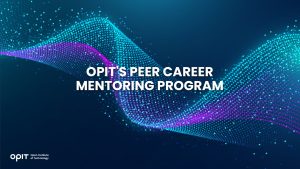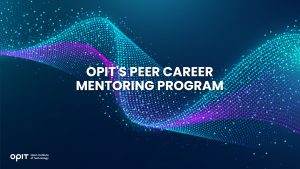

Artificial intelligence (AI) permeates every aspect of modern society, with that effect only becoming more pronounced as we move deeper into the 21st century. That’s a statement supported by the Brookings Institute, which asserts that whoever rules AI by 2030 (be it a country or corporation) will rule the global roost until at least 2100.
The point is that AI is already everywhere, even if in limited capacities, and you need to be ready for an AI-centric world to unfold ahead of you in the future. The right AI courses ensure you’re ready, so let’s look at four that you can complete today.
What Is Artificial Intelligence (AI)?
As humans, our brains give us the ability to learn and adapt to everything around us. For computers, AI achieves the same thing, equipping machines with the ability to take in datasets, learn from the data, and apply what it learns to real-world scenarios. There are many types of AI, with the following three being among the most prominent:
- Narrow AI – An AI system that’s dedicated to performing a single task, like a chatbot that delivers stock responses based on user queries. Think of these AI as the “manual labor” machines that exist to do the same thing over and over again.
- General AI – With general AI, we move closer to AI that has the same capacities to learn and apply that humans have. Multi-functional is the keyword here, as these AIs will be capable of completing multiple tasks at a human level.
- Superintelligent AI – Though not in existence yet, superintelligent AI is the pinnacle of AI research, or the peak on the Mount Everest of AI. In addition to bringing the multi-functional talents that humans have to the table, these AI will have an unlimited capacity for learning.
We’re nowhere near the superintelligent AI level yet (some even say that this type of AI will be more of a threat than a help to humanity), but we can see AI in so many industries already. Self-driving cars, automated stock checkers, and even email spam filters are all examples of narrow AI in action, with each having specific functions. As the technology evolves, and it’s already doing so at a rapid pace, we’ll see more multi-function AI come to the fore.
Factors to Consider When Choosing an AI Course
When choosing a course, the key question is always what is artificial intelligence course criteria that actually matters? Here are five things to look for in an artificial intelligence course:
- Quality course content – In this context, “quality” doesn’t solely mean “good” (though that’s a part of it). Your course also needs to deliver an educational experience that furthers whatever goals you’ve set for yourself in your career.
- Course flexibility – Some people can commit themselves fully to an AI course. Others need to fit their learning around work, family, and other commitments. Figure out which category you slot into and search for courses that offer the flexibility (or lack thereof) that you need.
- Instructor expertise – Good instructors bring a combination of theoretical mastery and industry experience to their courses. That’s why the best AI courses are usually created, and run, by people who currently work in the field.
- Course reviews and ratings – Online reviews and ratings are the modern “word of mouth,” with global courses benefitting (or otherwise) from what their students have to say online. A few minutes of research can tell you if other students consider your chosen course to be a dud or an AI masterclass.
- Pricing – As attractive as a full Master’s degree may be, the five-figure pricing may feel prohibitive. Other courses, such as a short-term artificial intelligence online course, may offer snippets of what you need to know at a much lower price. Balance your needs against your budget to make your choice.
Top AI Online Courses
There is no such thing as the “best” artificial intelligence course because every course offers something different that may or may not align with your needs. But these four run the gamut, from full-blown Master’s degrees (with accreditation) to crash courses designed to get you up to speed as fast as possible.
Course 1 – CS50’s Introduction to Artificial Intelligence With Python (Harvard)
There are few educational institutions as prestigious as Harvard University, and its CS50 course is perfect for those who already have a grasp of the Python programming language. Offered completely online, it’s a self-paced course that comes with a verified certificate (assuming you’re willing to pay an extra $199/€180).
Key Topics Covered
- Reinforcement learning as it applies to machine learning
- The core principles of artificial intelligence
- Creating Python programs that use AI
- An in-depth study into graph search algorithms
Course Duration and Pricing
Harvard advertises the course as a seven-week-long self-paced online program and recommends between 10 and 30 hours of study per week. How much time you actually spend on your studies depends on how quickly you pick up the concepts. It’s free to enroll (though a certificate costs money, as mentioned) and enrollment is open between May and December of each year.
Course 2 – Expand Your Knowledge of Artificial Intelligence (Udacity)
Marketed as a “nanodegree” program, which basically means it packs a lot of information into a short timeframe. Expand Your Knowledge gives you access to a digital classroom. It comes with some prerequisites, such as an understanding of Python and statistics, but it’s a course designed for those taking their first steps into applied AI.
Key Topics Covered
- Foundational AI algorithms that power things like NASA’s Mars Rover
- An introduction to AI concepts using Python as your base programming language
- Classical graph search algorithms
- Project reviews and feedback from over 1,400 people in the AI field
Course Duration and Pricing
This is a three-month course, with estimated study hours of between 12 and 15 per week, making it ideal for part-time learners who want to grasp the fundamentals of AI. Pricing is flexible, too. You can subscribe to the monthly version of the course via Udacity at a cost of £329 (approx. €377) per month or buy the whole thing upfront for £837 (approx. €959).
Course 3 – Master in Applied Data Science & AI (OPIT)
Those who’ve already completed a Bachelor’s degree in a computing or statistical subject may want to continue their full-time studies. OPIT’s Master’s program offers that opportunity, with its 100% online course being supported by experienced tutors who are available literally whenever you need them. The course contains both live and prerecorded content and the degree you receive carries European Qualification Framework accreditation.
Key Topics Covered
- Real-life business problems (and solutions) that use both AI and data science
- Python programming in the context of AI and data science
- Business-related topics, such as the ethics surrounding AI usage and project management
- Applied machine learning and artificial intelligence techniques
Course Duration and Pricing
OPIT’s Master’s program is a full-time postgraduate course. The regular version takes 18 months of self-timed study to complete. A fast-track version is available, lasting for 12 months, for those who want a more intensive educational experience. The cost varies depending on when you enroll. Intakes occur in October of each year, with early birds paying a discounted price of €4,950, to save almost €1,500 on the usual €6,500 price.
Course 4 – AI Engineering Professional Certificate (IBM via Coursera)
For those looking for direct tutelage from professionals who already work in the AI field, IBM’s offering is one of the best AI courses online. It’s also ideal for beginners, with no experience in computing needed and a flexible schedule allows you to learn as and how you want. Those studying for formal degrees aren’t left out. The certificate you earn through this course counts toward your degree credit.
Key Topics Covered
- The foundations of machine learning and neural networks
- Machine learning algorithm deployment
- Neural network development using PyTorch, Keras, and TensorFlow
- Implementation of both supervised and unsupervised machine learning models
Course Duration and Pricing
Flexibility is the name of the game with this course. It lasts for eight months, with three hours of learning per week, though fast and full-time learners may be able to complete it much quicker. Enrollment begins in May of each year, and the first seven days of the course act as a free trial so you can get a taste of what it has to offer. It’s also fairly cheap, with the course costing around €125 if you go for the full eight-month option.
Benefits of Taking AI Courses
There’s no use looking for the best artificial intelligence course if you don’t understand how that course will help you in the future. These are four benefits of studying AI:
- Develop a skillset that will not only be important as we move toward an AI-driven future, but will serve as a foundation for the skills you’ll need to develop as AI evolves.
- Combine theoretical and practical knowledge of AI to make your CV sparkle when it’s in front of employers.
- Create the problem-solving skills that are essential in the tech industry, with those skills often being transferable to other sectors.
- Follow whatever path you want in the constantly branching AI field.
Take Your Next Career Step With an Artificial Intelligence Online Course
Each of the four courses highlighted here offers something different. Some are short-term introductory courses while others allow full-time students to continue in-depth formal education. Whichever you choose serves as an investment into your future. AI is already causing ripples in the industrial ocean, and those ripples will grow into a tidal wave of opportunity for those who are prepared for the explosive growth of the industry. By investing in yourself today, through education and career foresight, you set yourself up for an amazing future tomorrow.
Related posts

The Open Institute of Technology (OPIT) is the perfect place for those looking to master the core skills and gain the fundamental knowledge they need to enter the exciting and dynamic environment of the tech industry. While OPIT’s various degrees and courses unlock the doors to numerous careers, students may not know exactly which line of work they wish to enter, or how, exactly, to take the next steps.
That’s why, as well as providing exceptional online education in fields like Responsible AI, Computer Science, and Digital Business, OPIT also offers an array of career-related services, like the Peer Career Mentoring Program. Designed to provide the expert advice and support students need, this program helps students and alumni gain inspiration and insight to map out their future careers.
Introducing the OPIT Peer Career Mentoring Program
As the name implies, OPIT’s Peer Career Mentoring Program is about connecting students and alumni with experienced peers to provide insights, guidance, and mentorship and support their next steps on both a personal and professional level.
It provides a highly supportive and empowering space in which current and former learners can receive career-related advice and guidance, harnessing the rich and varied experiences of the OPIT community to accelerate growth and development.
Meet the Mentors
Plenty of experienced, expert mentors have already signed up to play their part in the Peer Career Mentoring Program at OPIT. They include managers, analysts, researchers, and more, all ready and eager to share the benefits of their experience and their unique perspectives on the tech industry, careers in tech, and the educational experience at OPIT.
Examples include:
- Marco Lorenzi: Having graduated from the MSc in Applied Data Science and AI program at OPIT, Marco has since progressed to a role as a Prompt Engineer at RWS Group and is passionate about supporting younger learners as they take their first steps into the workforce or seek career evolution.
- Antonio Amendolagine: Antonio graduated from the OPIT MSc in Applied Data Science and AI and currently works as a Product Marketing and CRM Manager with MER MEC SpA, focusing on international B2B businesses. Like other mentors in the program, he enjoys helping students feel more confident about achieving their future aims.
- Asya Mantovani: Asya took the MSc in Responsible AI program at OPIT before taking the next steps in her career as a Software Engineer with Accenture, one of the largest IT companies in the world, and a trusted partner of the institute. With a firm belief in knowledge-sharing and mutual support, she’s eager to help students progress and succeed.
The Value of the Peer Mentoring Program
The OPIT Peer Career Mentoring Program is an invaluable source of support, inspiration, motivation, and guidance for the many students and graduates of OPIT who feel the need for a helping hand or guiding light to help them find the way or make the right decisions moving forward. It’s a program built around the sharing of wisdom, skills, and insights, designed to empower all who take part.
Every student is different. Some have very clear, fixed, and firm objectives in mind for their futures. Others may have a slightly more vague outline of where they want to go and what they want to do. Others live more in the moment, focusing purely on the here and now, but not thinking too far ahead. All of these different types of people may need guidance and support from time to time, and peer mentoring provides that.
This program is also just one of many ways in which OPIT bridges the gaps between learners around the world, creating a whole community of students and educators, linked together by their shared passions for technology and development. So, even though you may study remotely at OPIT, you never need to feel alone or isolated from your peers.
Additional Career Services Offered by OPIT
The Peer Career Mentoring Program is just one part of the larger array of career services that students enjoy at the Open Institute of Technology.
- Career Coaching and Support: Students can schedule one-to-one sessions with the institute’s experts to receive insightful feedback, flexibly customized to their exact needs and situation. They can request resume audits, hone their interview skills, and develop action plans for the future, all with the help of experienced, expert coaches.
- Resource Hub: Maybe you need help differentiating between various career paths, or seeing where your degree might take you. Or you need a bit of assistance in handling the challenges of the job-hunting process. Either way, the OPIT Resource Hub contains the in-depth guides you need to get ahead and gain practical skills to confidently move forward.
- Career Events: Regularly, OPIT hosts online career event sessions with industry experts and leaders as guest speakers about the topics that most interest today’s tech students and graduates. You can join workshops to sharpen your skills and become a better prospect in the job market, or just listen to the lessons and insights of the pros.
- Internship Opportunities: There are few better ways to begin your professional journey than an internship at a top-tier company. OPIT unlocks the doors to numerous internship roles with trusted institute partners, as well as additional professional and project opportunities where you can get hands-on work experience at a high level.
In addition to the above, OPIT also teams up with an array of leading organizations around the world, including some of the biggest names, including AWS, Accenture, and Hype. Through this network of trust, OPIT facilitates students’ steps into the world of work.
Start Your Study Journey Today
As well as the Peer Career Mentoring Program, OPIT provides numerous other exciting advantages for those who enroll, including progressive assessments, round-the-clock support, affordable rates, and a team of international professors from top universities with real-world experience in technology. In short, it’s the perfect place to push forward and get the knowledge you need to succeed.
So, if you’re eager to become a tech leader of tomorrow, learn more about OPIT today.

The world has entered the age of artificial intelligence (AI), and this exciting new technology is already changing the face of society in an ever-growing number of ways. It’s influencing a plethora of industries and sectors, from healthcare and education to finance and urban planning. This guide explores AI’s impact on three of the core pillars of life: business, education, and sustainability.
AI in Business: Unlocking Unprecedented Opportunities
In the world of business, the number of uses of AI is growing by the day. Whether it’s in sales, marketing, customer relations, operational optimization, cybersecurity, data management, or some other aspect of organizational life, there are so many ways this technology can unlock new opportunities or expedite existing processes.
Take data as an example. Many businesses now collect and use large amounts of data to inform their decisions in areas like product development or marketing strategy. But they have, up to now, been limited in how they can structure, visualize, and analyze their data. AI changes all that, as it can dig into vast databases with ease, extracting insights to drive actionable decisions in no time.
AI also bridges gaps in communications. It has the power to speak in most major languages, translating audio or written text with astonishing accuracy in an instant. In a globalized world, where many businesses buy and sell with partners, suppliers, investors, and other stakeholders from other nations, AI can help them communicate and exchange information more easily and reliably.
AI in Education: Democratizing and Accelerating the Learning Process
In the educational sector, AI is solving problems that have plagued this industry for generations and transforming the ways in which students learn and teachers teach. It can be used, for example, to personalize a student’s learning plan or adapt content to align with each learner’s favored learning style, making it easier for them to soak up and retain information and skills.
AI’s generative capabilities are also proving useful in the education sector. Teachers, for example, can turn to generative AI models to create lesson plans or supplementary content to support their courses, such as tables, charts, infographics, and images. This all helps to make the learning experience more diverse, dynamic, and engaging for every kind of learner.
On a broader level, there’s clear potential for AI to democratize education across the globe, making learning more accessible to all. That includes those in developing nations who may normally lack opportunities to gain knowledge and skills to achieve their ambitions. If harnessed correctly and responsibly, this technology could elevate education to whole new heights.
AI in Sustainability: Smarter Cities and Next-Level Efficiency
Sustainability is one of the sticking points when talking about AI, as many critics of the technology point to the fact that it involves huge amounts of energy and relies heavily on large and costly data centers to operate. At the same time, AI could also solve many of the sustainability crises facing the world today, uncovering solutions and innovations that may have previously taken decades to develop.
It’s already proving its value in this domain. For instance, DeepMind developed an AI system that was actually able to optimize data center energy efficiency, cutting the amount of energy used to cool data center hardware by a whopping 40% and improving energy efficiency in certain centers by 15%. That’s just one example, and it’s only the start of what AI could do from an environmental perspective.
This tech is also making cities smarter, more efficient, and more pleasant in which to live through AI-powered navigation aids or traffic redistribution systems. It also holds potential for future urban planning, city development, and infrastructure construction, provided the correct systems and frameworks can be established to make the best use of AI’s advantages.
The Ethical Challenges and Risks of AI
Despite its almost countless advantages and possible applications, AI is not without its flaws. This technology brings challenges and risks to go along with its opportunities, and five leading examples include:
- Bias: Algorithmic bias is an issue that has already presented itself during the relatively brief existence of AI so far. Some systems, for example, have issued responses or generated content that could be classified as discriminatory or prejudiced, due to the training data they were given.
- Privacy: There are fears among populations and analysts about the amount of data being fed into AI systems and how such data could be misused, potentially violating people’s rights of privacy and falling foul of data privacy regulations, such as GDPR.
- Misuse: Like so many game-changing technologies, AI has the potential to be used for both benevolent and malicious purposes. It may be used to spread misinformation and “fake news,” influence public opinion, or even in cyber-attacks, for instance.
- Over-reliance: AI is so powerful, with the capacity to carry out tasks with remarkable precision and speed, that it will be tempting for organizations to integrate it into many of their workflows and decision-making processes. But AI cannot be treated as a substitute for human judgment.
- Sustainability: There are also fears about the energy costs associated with AI and the data centers needed to power it, plus the fact that some elements of the burgeoning AI industry may exploit workers in poorer nations worldwide.
Solving These Challenges: Regulation and Responsible Use of AI
With the right approach, it is possible to solve all the above challenges, and more, making AI the most valuable and beneficial new technology the world has seen since the advent of the internet. This will require a two-pronged strategy focusing on both regulation and responsible usage.
Europe is already leading the way in the first aspect. It has introduced the AI Act – a world-first regulatory framework related to artificial intelligence, laying out how it should be used to drive innovation without infringing on the fundamental rights of workers and the larger public.
Educational institutions like the OPIT – Open Institute of Technology are also leading the way in the second aspect, educating people around the world on how to work with AI in a responsible, ethical way, through programs like the MSc in Responsible Artificial Intelligence.
By establishing rules and regulations about AI’s usage and educating the tech leaders of tomorrow in how to work with AI in a fair and responsible way, the future is bright for this exciting and extraordinary new technology.
Have questions?
Visit our FAQ page or get in touch with us!
Write us at +39 335 576 0263
Get in touch at hello@opit.com
Talk to one of our Study Advisors
We are international
We can speak in:


